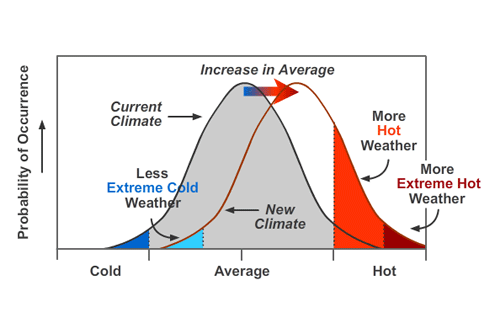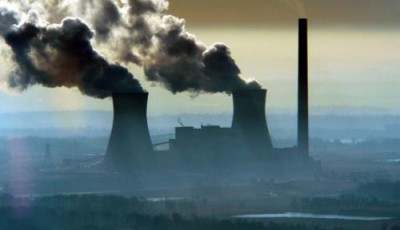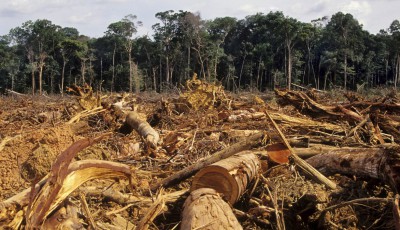Paris Agreement Basics Part 1: Global Warming
January 14th, 2016 In Paris this last December, 195 countries and the European Union signed an international agreement that Canadian Prime Minister Justin Trudeau called a “historic, ambitious, and balanced agreement to fight climate change”(1) and US President Barack Obama called “a powerful signal that the world is firmly committed to a low-carbon future”(2). The Paris Agreement(the “Agreement”) emerged from the 21st session of the Conference of the Parties to the United Nations Framework Convention on Climate Change.
Many excellent outlines of the Agreement have been written including the Gowlings law firm article and Dentons law firmpiece. In this first of a series of posts, I would like to address some of the underlying questions that may arise for readers trying to understand the Agreement. Part 1 aims to answer the most basic question: why has the global community come together to limit global warming?
Let us begin with the essence of the Agreement. Article 2 states, that in order “to strengthen the global response to the threat of climate change,” the signatories will hold “the increase in the global average temperature to well below 2 °C above pre-industrial levels.” So the Agreement is, at its core, an agreement to limit the increase in global temperature. Why is an increase above 2 °C (3.6 °F) harmful enough to warrant an international agreement?
First, it is important to understand that global temperature average is different from local temperature average. The global temperature average is the annual average across the planet. The global temperature average for 2014 was a surprisingly low 0.75 °C because it includes temperatures from extremely cold areas like Antarctica and from all four seasons. A global two degree increase does not mean a uniform increase of two degrees in climates across the world. Rather, temperature increase will be distributed unevenly. Certain regions, such as Canada’s far north, will be effected more strongly than others.
Evidence from the Earth’s climate history, along with predictive climate models, demonstrates that minor increases or decreases in global temperature average can lead to dramatic climate changes. During the last ice age, when glaciers covered most of Canada and parts of the United States, the global climate was significantly different from today’s. However, as found on the National Aeronautics and Space Administration (“NASA”) website, the global temperature average during this ice age was only around 5 °C lower than the global temperature average of today (3).
This magnified effect of global temperature average on global climate comes about because climate emerges from the interaction of many factors. The global temperature average, the amount of sunlight, and the water cycle, to name but a few, all influence each other and create the climate we experience on Earth. NASA (4), the US Environmental Protection Agency (5), and the Canadian Ministry of Environment and Climate Change (6) identify the following effects of increasing temperature on global climate systems:
Extreme weather, in other words, weather that is outside the historical norm. As the parameters of the climate change, some weather events will increase in frequency or force. Hurricanes and droughts are two such examples.

Time series of global mean sea level (deviation from the 1980-1999 mean) in the past and as projected for the future. https://www.ipcc.ch/publications_and_data/ar4/wg1/en/faq-5-1-figure-1.html
Changes in precipitation – increases in some areas and decreases in others. This can lead to flooding and droughts.
Annual precipitation in a higher greenhouse gas emissions scenario.
Sea level rise. As the temperature of the oceans increases and glaciers melt, sea level rises. Strongest effect is on coastal communities and island nations.

Time series of global mean sea level (deviation from the 1980-1999 mean) in the past and as projected for the future. https://www.ipcc.ch/publications_and_data/ar4/wg1/en/faq-5-1-figure-1.html
Ocean acidification. As ocean temperature rises and oceans absorb more carbon dioxide, the oceans become more acidic. This affects the basis of the oceanic ecosystems by dissolving corals and impairing the ability of shellfish to form shells.

In a lab experiment, a sea butterfly (pteropod) shell placed in seawater with increased acidity slowly dissolves over 45 days. Credit: Courtesy of David Littschwager/National Geographic Society http://ocean.si.edu/ocean-acidification
Extinction and migration of species, including migration of pest species into new regions.

The brown and red trees in this picture have been infested by mountain pine beetles near Winter Park, Colorado. http://www3.epa.gov/climatechange/impacts/forests.html
Some changes such as longer growing seasons in some areas and increased development in the North from the opening of the Northwest Passage, can be positive for humans. However, the Intergovernmental Panel on Climate Change (“IPCC”) has pronounced that, “Taken as a whole, the range of published evidence indicates that the net damage costs of climate change are likely to be significant and to increase over time.”
The IPCC is one of the many organizations devoted to the assessment of climate change impacts. Despite the global scientific effort, however, the actual impact of global temperature average increase can be predicted with only limited accuracy. Predictions are uncertain and there exists a possibility that increasing temperatures will lead to truly catastrophic effects.
As Harvard economist Martin L. Weitzman and his pupil Gernot Wagner argue in their book Climate Shock: The Economic Consequences of a Hotter Planet, the risk of global catastrophe is the most important reason to take international action to limit global temperature average increase. They write that:
If you had a 10 percent chance of having a fatal car accident, you’d take necessary precautions. If your finances had a 10 percent chance of suffering a severe loss, you’d reevaluate your assets. So if we know the world is warming and there’s a 10 percent chance this might eventually lead to a catastrophe beyond anything we could imagine, why aren’t we doing more about climate change right now? We insure our lives against an uncertain future–why not our planet? (4)
This combination of likely net damage costs of climate change and the risk of catastrophe has generated political will to address the problem and led to the signing of the Paris Agreement.
This article reprinted with permission from Nimonik







